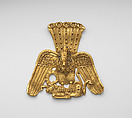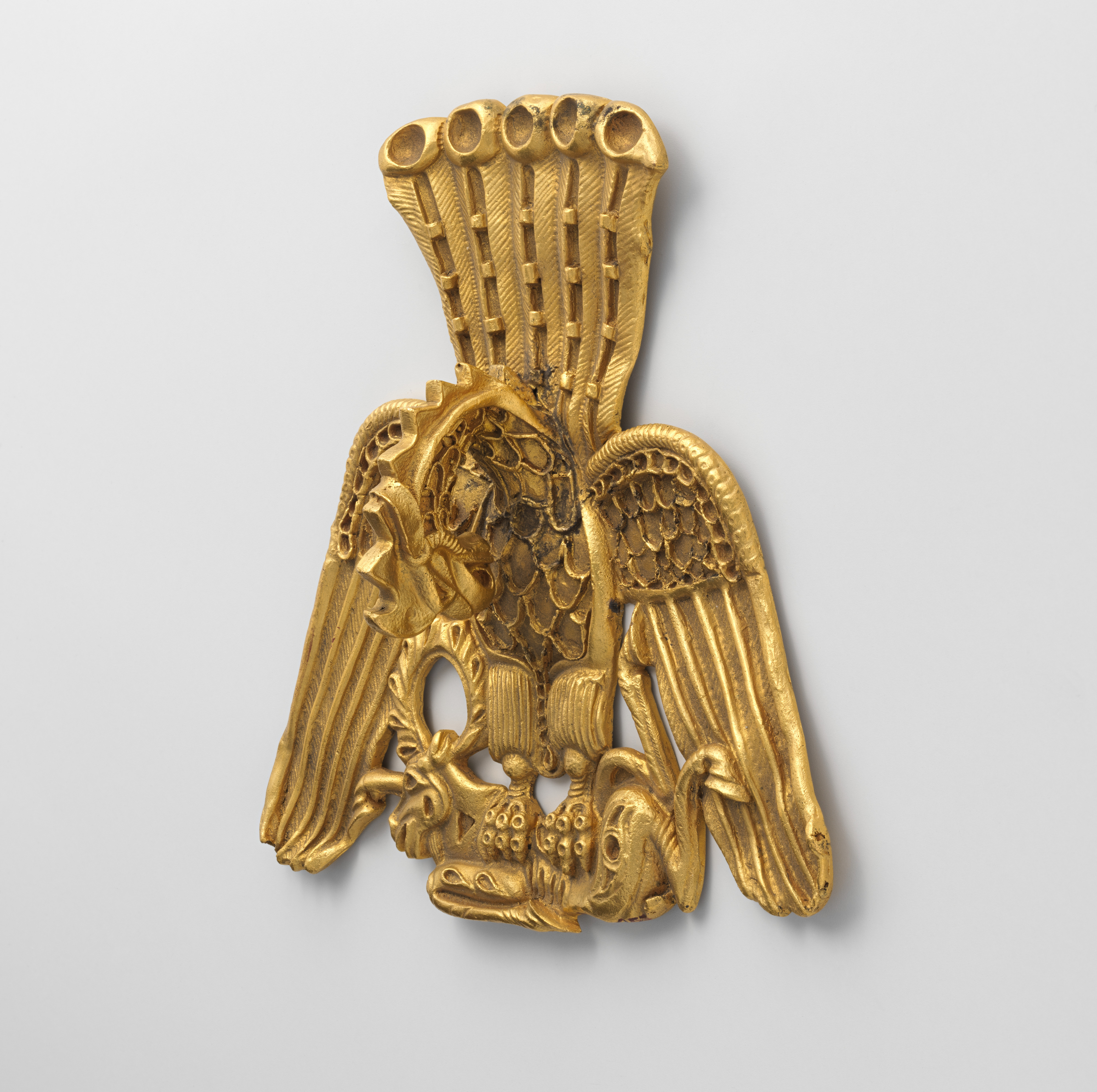Reproduction of a Scythian plaque
Not on view
Electrotyping is a chemical process used historically to make high quality reproductions of works of art. During the Victorian era, one of the main producers was Elkington & Co. of Birmingham. They were licensed by the South Kensington Museum of London (now the Victoria & Albert Museum) to produce replicas of objects from the royal treasuries and museums in Europe. The electrotypes approved by the Department of Science & Art, a British governmental agency, carry Messrs. Elkington’s mark in the form of an official stamp in metal.
This modern electrotype is a copy of a gold plaque in the Hermitage Museum, St. Petersburg. The original was part of the Siberian collection of Peter the Great of Russia (r. 1682-1725), who commissioned the first Russian archaeological excavations. The Siberian Collection of Peter the Great contains gold artefacts from the Scythian and Sarmatian nomadic cultures of Eurasia. This plaque in the shape of a griffin defeating an ibex is an aigrette, a type of decorated headdress, and would originally have been richly enhanced by polychromed inlays that have not been preserved.
In the nineteenth century, many museums collected copies of ancient and historical works of art with the aim of presenting outstanding works to a broader public and to serve as inspiration for artists and manufacturers. The Metropolitan Museum of Art, founded in 1870, began to acquire electrotypes in its first decade. In 1883, Henry Marquand, a collector and early patron of the Museum, funded a large purchase from Elkington & Co. of nearly three hundred pieces. Today, these works are part of many departments in the Museum and along with plaster casts reflect the history of collecting and the role of the museum as a locus for the teaching of art history.
This image cannot be enlarged, viewed at full screen, or downloaded.
This artwork is meant to be viewed from right to left. Scroll left to view more.



